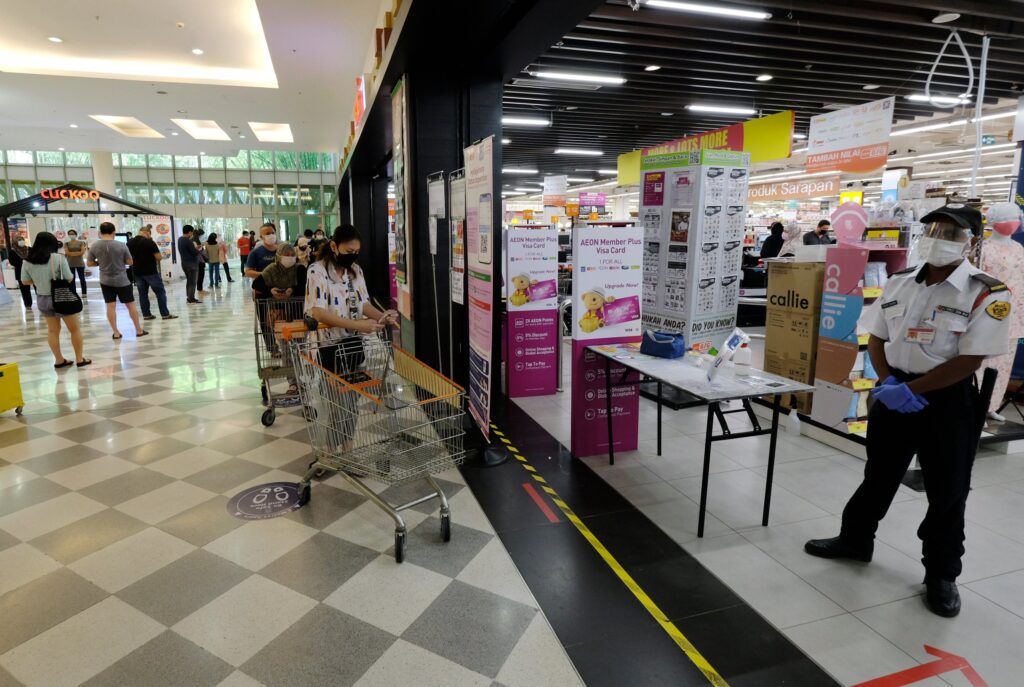KUCHING (May 14) Analysts laud the government’s decision to tighten standard operating protocols (SOPs) while keeping businesses open under the Movement Control Order (MCO) 3.0, effective May 25 until June 7, as daily Covid-19 cases remain above 6,000 for five consecutive days.
The tightened SOPs involve changes in business operating hours, work-from-home (WFH) directive and public transport capacity.
The government has decided to not impose a full closure on the economic sectors, as it strives to balance the importance of health and economic survival, commented the team at Kenanga Investment Bank Bhd (Kenanga Research).
“Nonetheless, in a situation where majority of the districts in Malaysia are categorised as red zones, we view that stricter measures for the economic sectors should be imposed,” it said.
“The resulting economic pain can be partly offset by distributing additional fiscal and credit measures at an accelerated pace to affected businesses and individuals.
“The impact on fiscal coffers can be managed by emphasising on non-monetary measures. Nevertheless, further rise in government debt level at this juncture is justifiable as long as the government swiftly embarks on a debt tapering initiatives as soon as the economy stabilises.”
In a special broadcast interview Sunday night, Prime Minister Tan Sri Muhyiddin Yassin expects the country’s economic situation to improve this year, in line with the government action and the recovery of economic activity and world trade despite the Covid-19 pandemic.
He said Malaysia was on the right track in economic planning and management towards stronger and sustainable growth and it is beginning to show a positive impact.
“We’re already seeing results from our plans. One … maybe Covid-19 hasn’t been resolved yet. But our economy is already showing signs of improvement. Our exports are increasing, our imports are increasing, (and) the number of workers employed has reached 150,000, much higher than the scheduled 120,000.
“The projections of international bodies, our experts and Bank Negara … we will see a growth of 6.5 to 7.0 per cent this year. It takes four to seven months to see its achievement,” he said.
From this point onwards, Kenanga Research maintained Malaysia’s 2021 gross domestic product (GDP) growth forecast range between six to 6.5 per cent and project 2022 GDP growth to range between five to 5.5 per cent.
Its initial forecast already took into account the implementation of a nationwide MCO 3.0 whilst remaining cautious regarding the rising number of local Covid-19 cases.
“We still expect 2H21 growth to be higher at 6.4 per cent supported by Malaysia’s ongoing vaccination drive, targeted policy support from the government, and a boost in exports growth amid higher crude oil prices and strong external demand for Covid-19-related items and semiconductors.
“Nevertheless, downside risks remain should the local Covid-19 pandemic worsen, vaccine progress slow down, or domestic political situation create further uncertainty.”
Kenanga Research said the tighter SOPs will likely push its forecast to the lower end of the range, “however by avoiding full closure of economic sectors, the current recovery momentum should be sustained.”
“Of note, a survey conducted by the SME Association of Malaysia (SMEAM) found that nearly 40 per cent of SMEs expected that a full lockdown, akin to MCO 1.0, would have reduced their revenues by over 50 per cent, which would have potentially derailed economic recovery.
“We reckon the SMEAM study derived their conclusion based on Ministry of Finance’s daily loss estimate of RM2.4 billion during the first MCO, which ran from March 18 to May 3, 2020. Meanwhile, during MCO 2.0 from January 13 to February 18, 2021, it was estimated to have cost the country RM300 million to RM400 million a day.”
To note, the country first breached the 6,000 mark on May 19 and has recorded the highest increase in daily Covid-19 cases on May 23 with 6,976 infections.
Looking at the local Covid-19 trend during MCO 2.0, the pandemic curve started to flatten after more than four weeks of being under the strict stay-at-home order. If MCO 2.0’s trend repeats, Kenanga Research said we may start to see a decline in the number of active cases in June.
“However, the emergence of new variants of concern coupled with poor adherence to SOPs could exacerbate the spread of the Covid-19,” it said.
“On the domestic vaccine front, after three months into the National Covid-19 immunisation programme, there are now more than 2.3 million doses of Covid-19 vaccines that have been administered in Malaysia.
“In all, a total of 1,471,449 Malaysians (4.5 per cent of the population) have received at least one vaccine shot and out of that total, more than half or 871,051 (2.7 per cent) have received both doses.
“Even though Malaysia has picked up the pace of its Covid-19 vaccination drive, the potential delay of the third phase of the immunisation programme due to Covid-19 vaccines shortage, could make it challenging for Malaysia to achieve its target of vaccinating at least 80 per cent (close to 27 million) of the population by February 2022.”

